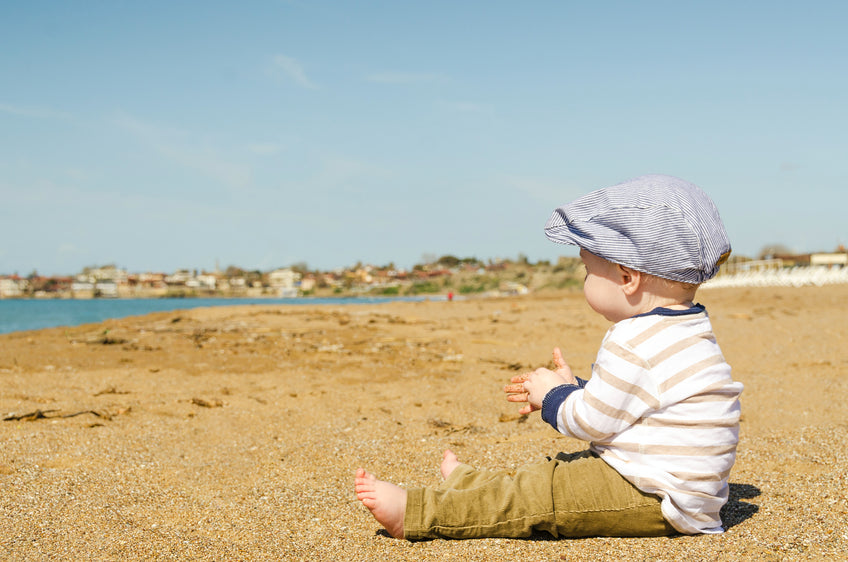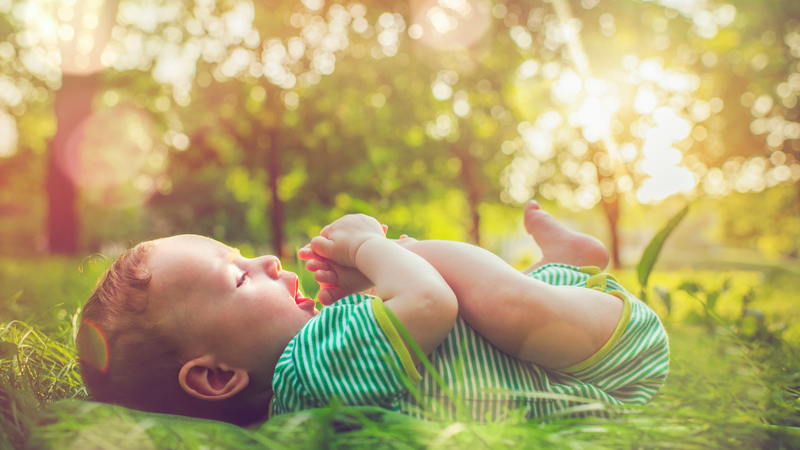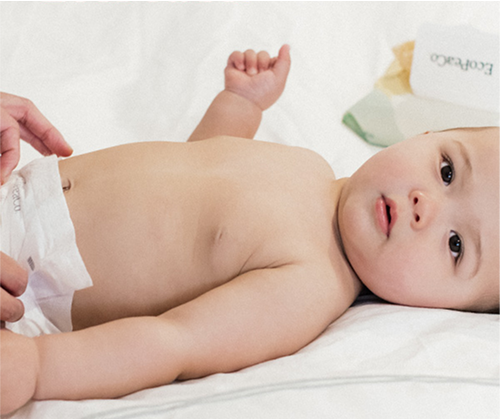In the early months and years of your child's life, their skin is especially sensitive. It's as delicate and precious as they are. Protecting skin from harmful sun rays is paramount, not just for your child’s comfort but for their health as well.
Sunburns can lead babies to more serious conditions, like skin cancer, later in life. That's a worry we'd all like to avoid, so let’s break down the effects of the sun, UV rays, and run through easy-to-implement advice on how to shield your little one from harmful sun exposure.
The Sun: Benefits and Dangers
We all love the feel of warm sunshine on our skin and your little one is no different. Sunlight plays a crucial role in our lives and health. It helps our bodies produce vitamin D, an essential nutrient that aids in bone development and boosts our immune system. Exposure to daylight also helps regulate our body clocks, promoting good sleep - something all new parents surely appreciate!
On the flip side, the sun also emits ultraviolet (UV) radiation, which can be harmful, especially to the delicate skin of babies and toddlers. UV radiation can cause sunburn and long-term skin damage, leading to premature aging of the skin and increasing the risk of skin cancers later in life.
Babies and young children have even thinner and more sensitive skin. It produces less melanin, the pigment that helps protect against sunburns. As a result, your baby's skin is more vulnerable to the sun's effects.
That's why sun protection is so important - it's about more than just preventing sunburn. Good sun safety habits from an early age can reduce the risk of skin cancer and other sun-related skin damage as your child grows. Our role as parents is not only to care for our children today but to ensure their health for all the tomorrows to come.

UV Rays: What You Need to Know
Talking about the sun’s harmful rays, mainly refers to ultraviolet (UV) rays. These rays are invisible to the human eye but can have a significant impact on skin health. Let's break down what these rays are and how they can affect your baby's delicate skin.
There are two types of UV rays that reach the earth's surface: Ultraviolet A (UVA) and Ultraviolet B (UVB).
UVA rays are prevalent throughout the day, irrespective of the season. They are less intense than UVB rays but much more common. UVA rays penetrate deep into the skin and are the primary cause of premature skin aging and wrinkles. Over time, repeated exposure can lead to certain types of skin cancers.
UVB rays are the ones primarily responsible for sunburn. They are most potent during the peak sun hours of 10 a.m. to 4 p.m., particularly during the summer months. UVB rays damage the top layers of the skin, playing a key role in the development of skin cancer.
Both UVA and UVB rays can harm your baby’s skin and potentially lead to future issues later in life. That's why it's essential to shield your little one from the sun's harmful rays as much as possible when you’re enjoying time outside together.
Practical Steps for Protecting Your Little One
Putting this into practice, here are some simple steps you can take to protect your baby’s sensitive skin from harmful sun exposure.
Opt for Shade
The simplest way to reduce your baby's sun exposure is to seek shade whenever possible, especially during peak sun hours. Want an easy way to estimate the sun’s strength? Practice the Shadow Rule: if your shadow is shorter than you, the sun's rays are at their strongest and it's best to stay in the shade.
Choose the Right Clothing
Clothing offers a great line of defense against the sun. Opt for lightweight, long-sleeved tops and pants to cover your baby's skin as much as possible. Clothes with a tighter weave offer more protection, and some are even rated with an Ultraviolet Protection Factor (UPF). UPF indicates how much UV radiation can penetrate the fabric. For example, a garment with UPF 50 allows only 1/50th of the sun's UV radiation to reach the skin.
Effective Use of Sunscreen
Sunscreen should be your go-to for any areas that can't be covered by clothing. Choose a broad-spectrum sunscreen that protects against both UVA and UVB rays, has an SPF of at least 30 and is water-resistant. Mineral-based, hypoallergenic options will be better for your baby's skin and the environment. Apply generously and regularly, especially if your little one is playing in water or sweating and if you’re choosing a spray sunscreen always remember to rub it in to ensure full protection. Be sure to pay attention to instructions on your sunscreen for their lengths of effectiveness and reapplying times so you get the most protection.
The Importance of Hats and Sunscreen
Don't forget about the eyes! The skin around the eyes is thin and susceptible to UV damage. Plus, young children's eyes are even more sensitive to UV radiation. Protect your child's face and eyes with a wide-brimmed hat and wrap-around sunglasses that block 100% of UVA and UVB rays.
Even on cloudy days, up to 80% of the sun's UV rays can still reach your baby's skin. So, these protective measures are essential year-round, not just during the summer.

Making Sun Safety a Routine
Sun safety strategies become most effective when they are second nature. Incorporating these habits into your everyday routine doesn't need to be a daunting task. Try these straightforward strategies to make sun safety a normal part of your child's life.
- Be a Role Model: Children learn by imitating adults, so be a good role model. Make sure you follow the same sun safety rules that you set for your little one. Wear protective clothing, apply sunscreen regularly and wear your sunglasses and hat. Show them that sun safety is a standard part of going outdoors.
- Make it Fun: Who said safety can't be fun? Choose sun hats and sunglasses in your child's favorite colors or patterns. Let them help apply sunscreen with your supervision. By associating sun protection with enjoyable activities, you make it something they look forward to.
- Prepare Ahead: Keep sun protection items near the front door or in your diaper bag so you don't forget them when you're heading out. This includes hats, sunglasses, protective clothing, and sunscreen.
- Teach Them Young: Start sun safety habits early. As soon as your baby is old enough, teach them about the importance of wearing a hat and sunscreen before going outside. The sooner it becomes a routine, the less likely they are to resist these habits later on in life.
Remember, consistency is key in establishing routines. In time, your family will seamlessly incorporate these sun safety habits into your life, giving you one less thing to worry. Your child's skin is precious, and with these simple steps, you can ensure it receives the protection it deserves, leaving more time for what truly matters - enjoying these precious moments with your little one.
Want more information on sun protection for your baby? Check out our post on sunscreen tips for babies and toddlers.


